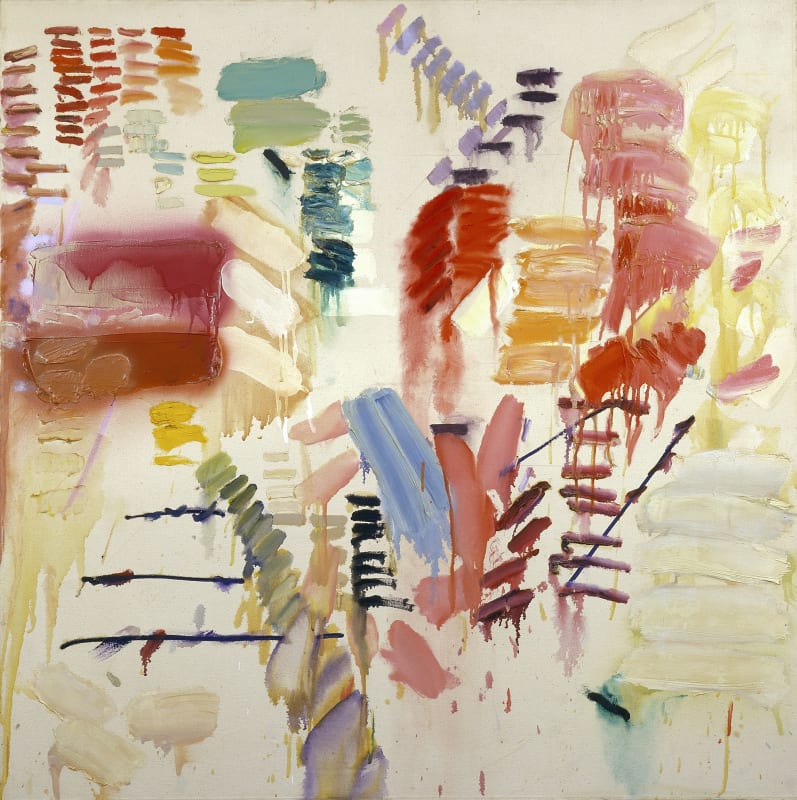The Lady of the Wild Things: Joan Snyder at Rutgers University Review by Lance Esplund
New Brunswick, N.J.
'All the totem-societies in ancient Europe," Robert Graves wrote in his book "The White Goddess," "were under the dominion of the Great Goddess, the Lady of the Wild Things: dances were seasonal and fitted into an annual pattern from which gradually emerges the single grand theme of poetry: the life, death and resurrection of the Spirit of the Year, the Goddess's son and lover." No other contemporary artist more deserves the title the "Lady of the Wild Things" than the abstract painter Joan Snyder, who is being honored with two concurrent retrospectives (one large show of prints and one of three-dozen small paintings) at Rutgers University, her alma mater.
A 2007 MacArthur Foundation fellow, Ms. Snyder (b. 1940) is an autobiographical and confessional artist—a hot-blooded romantic and a no-holds-barred expressionist who embraces anything and everything (crafts and children's art; Mondrian and graffiti). Her subjects range from love, death, sorrow, motherhood, sex and disease to feminism, war, politics, the body and the landscape. Although primarily a painter, Ms. Snyder works in bas-relief with collaged materials—herbs, earth, straw, sticks and flowers; plastic fruit, silk, spikes, plaster, papier-mâché, velvet and glitter. As a devout traditionalist who believes that content is expressed through form, however, she rarely allows her passions to overwhelm her pictures.
Ms. Snyder's work is as much about the rituals and inwardness of man as it is about the movements and appearances of nature. Her forms resemble moons, pools, jewels, nests, blossoms and wounds; every part and fluid of the human body; and her pictures suggest totems, altars, masks, fields and illuminated manuscripts. An alchemist at the easel who transforms her feelings into works of primitivistic power, Ms. Snyder is probably the closest thing we have in Western art to a witchdoctor or shaman.
In 2006, Ms. Snyder was given a painting retrospective at the Jewish Museum. That well-deserved show had its merits. But it was too small and included no prints, which is why these two exhibitions are so welcome. Both commence in 1963, during the artist's student days, before she was an abstract painter. Installed chronologically and thematically, the print show includes unique hand-colored monoprints, progressive prints and variant impressions. The exhibition, beautifully chosen and arranged by Marilyn Symmes, is accompanied by a lavish monograph (DelMonico Books/Prestel and the Zimmerli Art Museum) devoted to Ms. Snyder's print oeuvre.
The print show opens with early woodcuts reminiscent of German Expressionism, as well as Matisse's spare, linear ink drawings. Quickly, however, she makes a leap, seemingly through Kandinsky, to the synesthetic, abstract world of pure color movements. Working against the medium of printmaking (more as a painter than a graphic artist), Ms. Snyder incorporates words, images, colors and symbols until they are subsumed and then resurrected in a pictorial world that is solely her own.














































































































































































